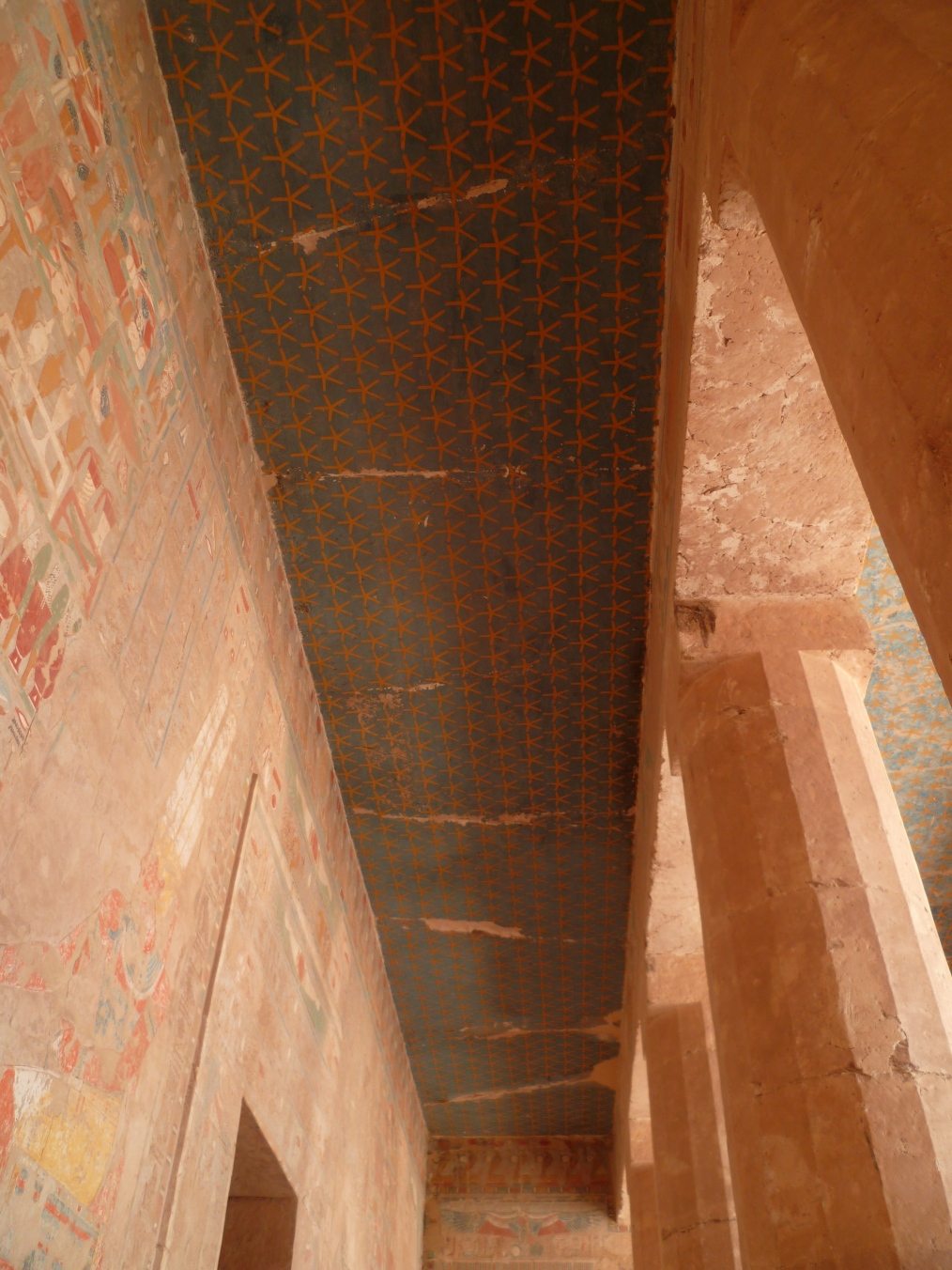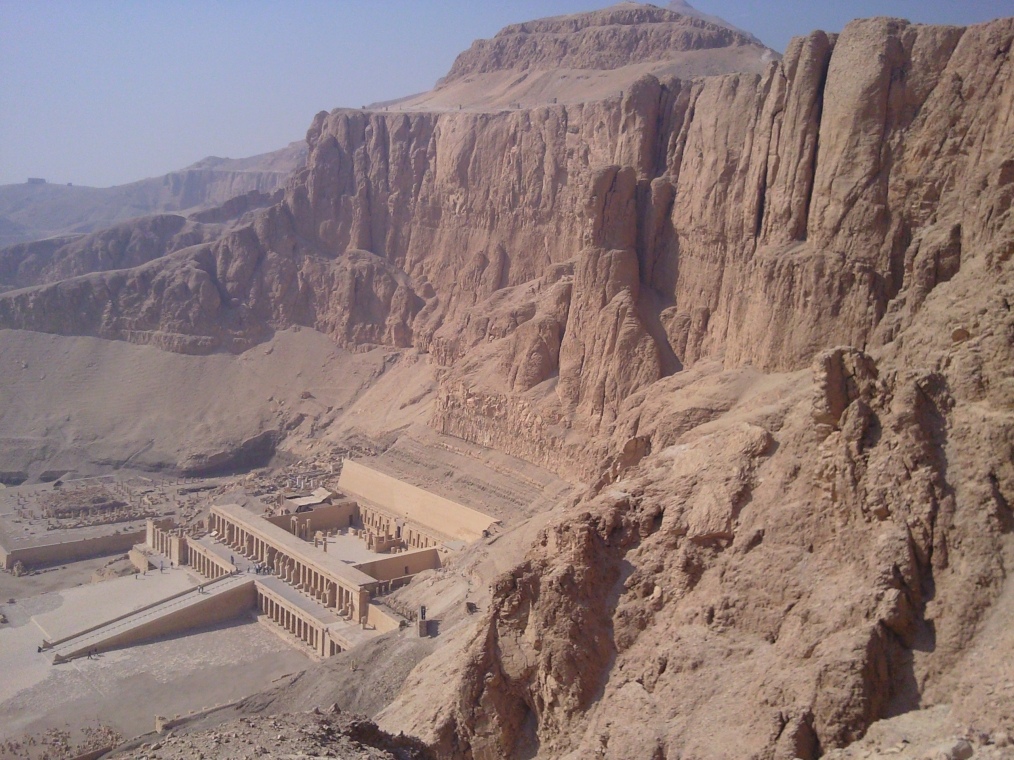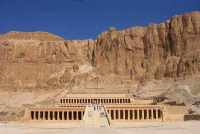Mysterious Temple and mysterious Queen Hatshepsut.(reigned 1479-1457 BC)
Hatshepsut was the most important of the rare female Pharaoh and therefore created disapproval in this patriarcal society.
Many attempts after her death to eradicate her trace on hieroglyphs but this temple is here to stay and still in good condition. Despite Toutmosis III’s ambitions to destroy her history (successor), she is, 3500 years later, a famous Pharaoh, playing between been man and woman representations, what else! (She assumed, for exemple the traditional false beard and the symbols of Pharaohs)
Located in Deir el Bahari, a complex of Mortuary Temples, it is dedicated to the Sun God Amon-Ra . Its most striking feature is a long colonnated terrace filled with many tall sculptures representing the Pharaoh and Deities.
The architecture’s Temple contains pylons, courts, a hypostyle hall, a sun court, a chapel and a sanctuary.
The chapel of Hathor, goddess of joy, mucic and love
The surviving reliefs on the wall document the birth of the first divine female Pharaoh and an expedition to a mysterious country near the Red Sea (the Land of Punt) from where they brought back copper, asphalt, naptha, carved amulets, myrrh and incense.
Hatshepsut’s temple is considered an incomparable monument of Ancient Egypt.
Beautiful original colors, The sacred Stars for eternity, with relief of her Divine Birth.
A simple wa’u….. for this destiny,this fine architecture, and her history.
To enjoy really really good, I propose you to discover the Temple after a walk up the mountain. It’s just amazing, you feel the temple like a present given from it. Wallahi!
Just Enjoy the next pictures, a normal health conditions is required.
Isn’t it Beautiful?
You walk up the Big Eternal Hatshepsut’s Monument and from this view, you could see others marvels of Ancient Egypt but…sshutt.. I’ll let you discover by yourself when you will come 😉
Hatshepsut was a great Pharaoh of the XVIII Dynasty, she built in Karnak the Red Chapel and famous Obelisqs. She wished gold obelisk for Amon Ra…With all her love, she built it in granit, with all her love too.
Hatshepsut, with all my love, you are a great Pharaoh.
Just a note : Luxor is amazing to gather all this Ancient History, following the biggest Pharaohs from the begining of them reign until them death, by Temples and tombs.















































 West Bank, the place to be in Luxor!
West Bank, the place to be in Luxor!
















